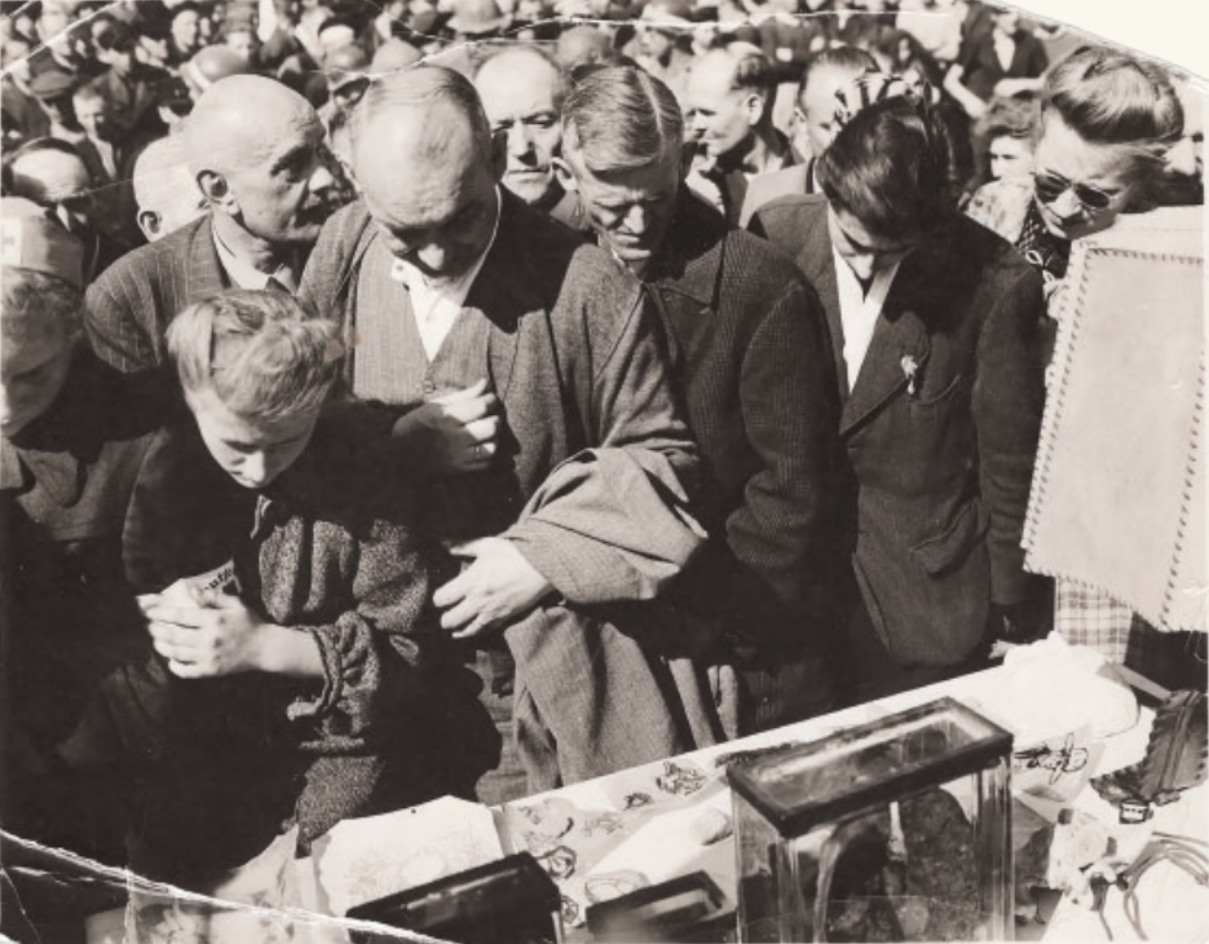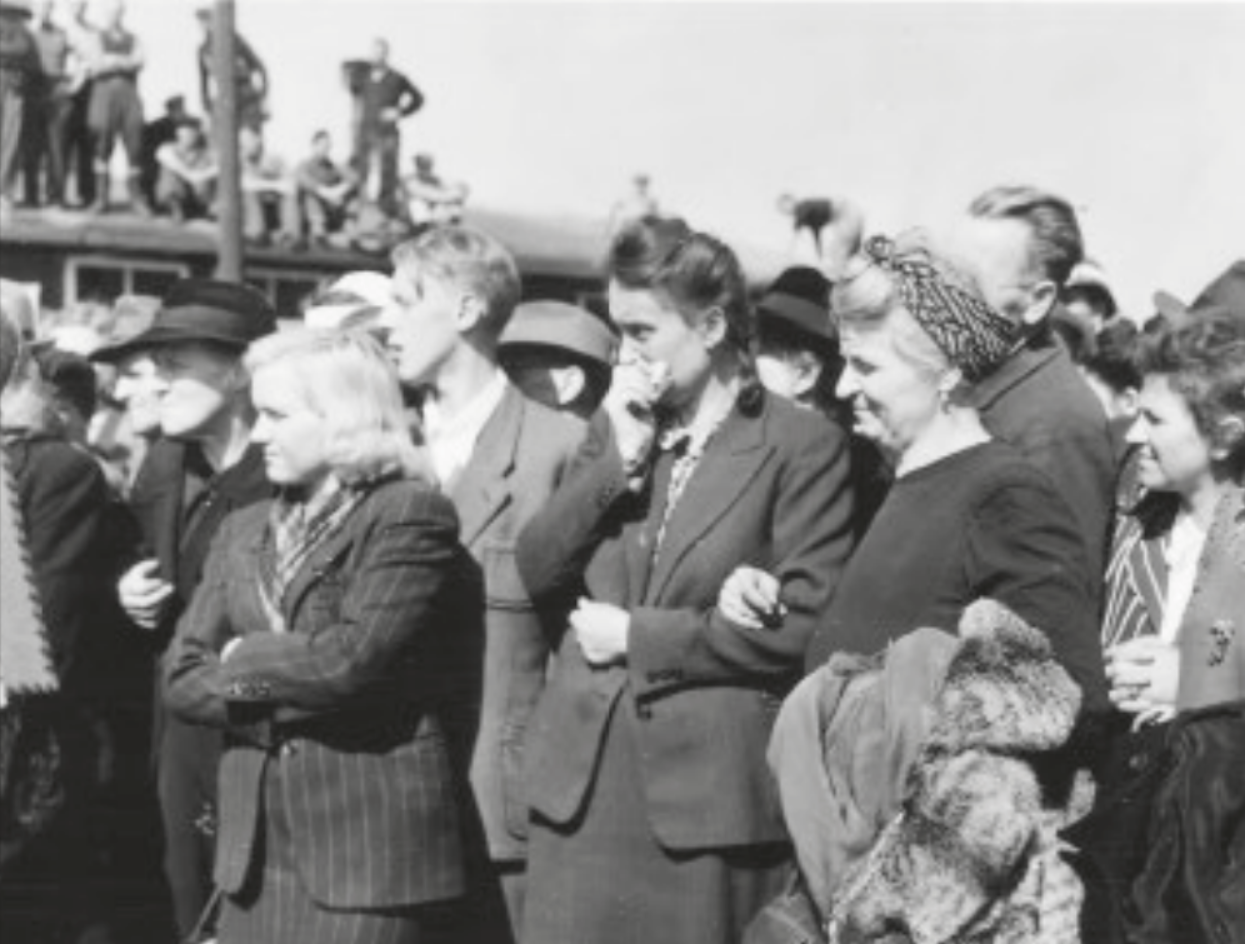
The Spanish survivor Jorge Semprún describes the Weimar residents’ visit to the crematorium:
“In the crematory yard that day, at any rate, an American lieutenant addressed the several dozen women, adolescents of both sexes, and elderly German men from the city of Weimar. The women were wearing spring dresses in bright colors. The officer spoke in a neutral, implacable voice. He explained how the crematory oven worked, gave the mortality figures for Buchenwald. […] The women (a good number of them, at least) were unable to restrain their tears and begged for forgiveness with theatrical gestures. Some of them obligingly went so far as to feel quite faint. The adolescents took refuge in despairing silence. The old men looked away, clearly unwilling to listen to any of this.”
Jorge Semprún, Literature or Life, New York 1997 [Paris 1994]






On 16 April 1945, the commander of the III U.S. Army, General George S. Patton, ordered more than 1,000 men and women from Weimar to visit Buchenwald. US soldiers and survivors led them through the camp and showed them the evidence of the crimes. A similar confrontation took place at the liberated Ohrdruf subcamp near Gotha and at many other crime sites. As in Weimar, the locals usually automatically denied any complicity in or responsibility for these crimes. After being confronted, they often deflected guilt.

